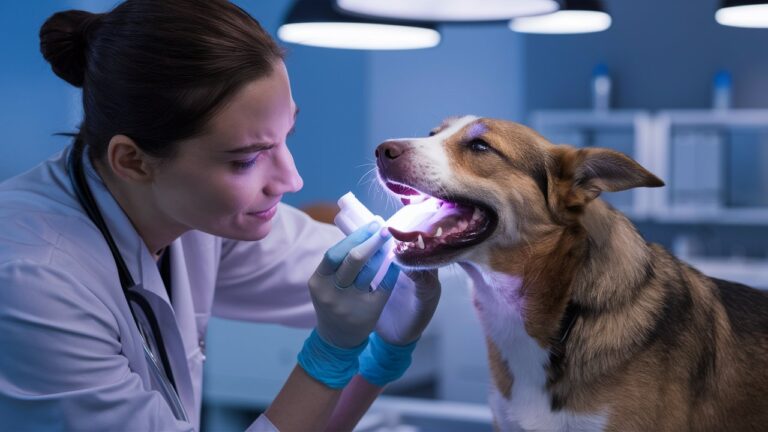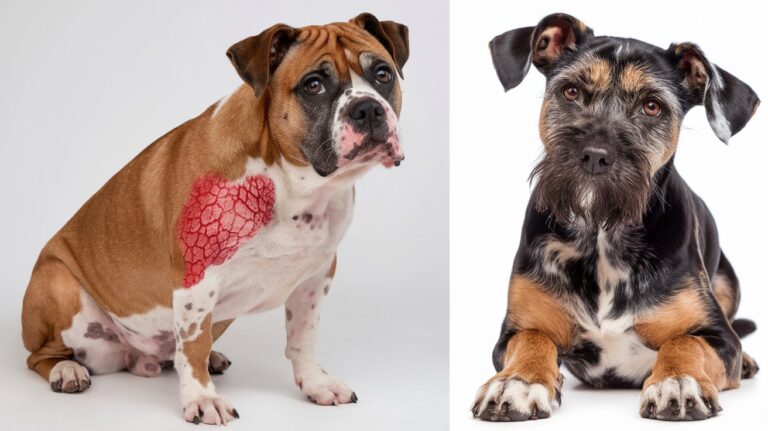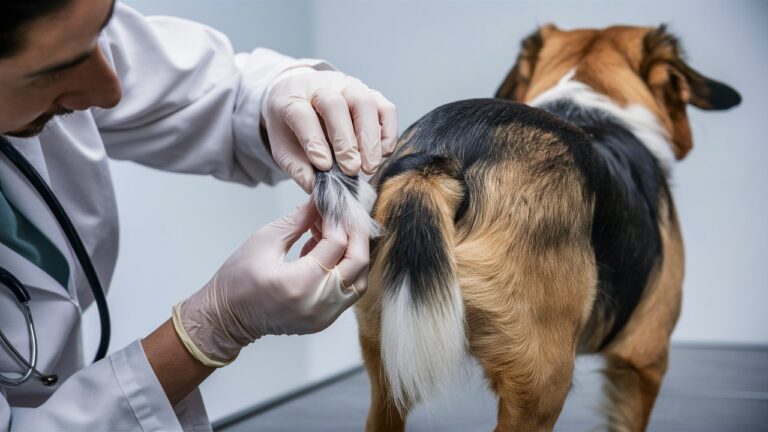Anesthesia for Dogs:100% Comprehensive Guide
Anesthesia plays a crucial role in veterinary medicine, allowing veterinarians to perform surgeries and other procedures with minimal pain and stress for our canine companions. However, the thought of anesthesia can be anxiety-inducing for pet owners. This comprehensive guide aims to demystify anesthesia for dogs, providing well-researched and informative insights to help pet owners understand what to expect. Additionally, personal anecdotes and stories are included to make the content relatable and engaging.
Understanding Anesthesia For Dogs
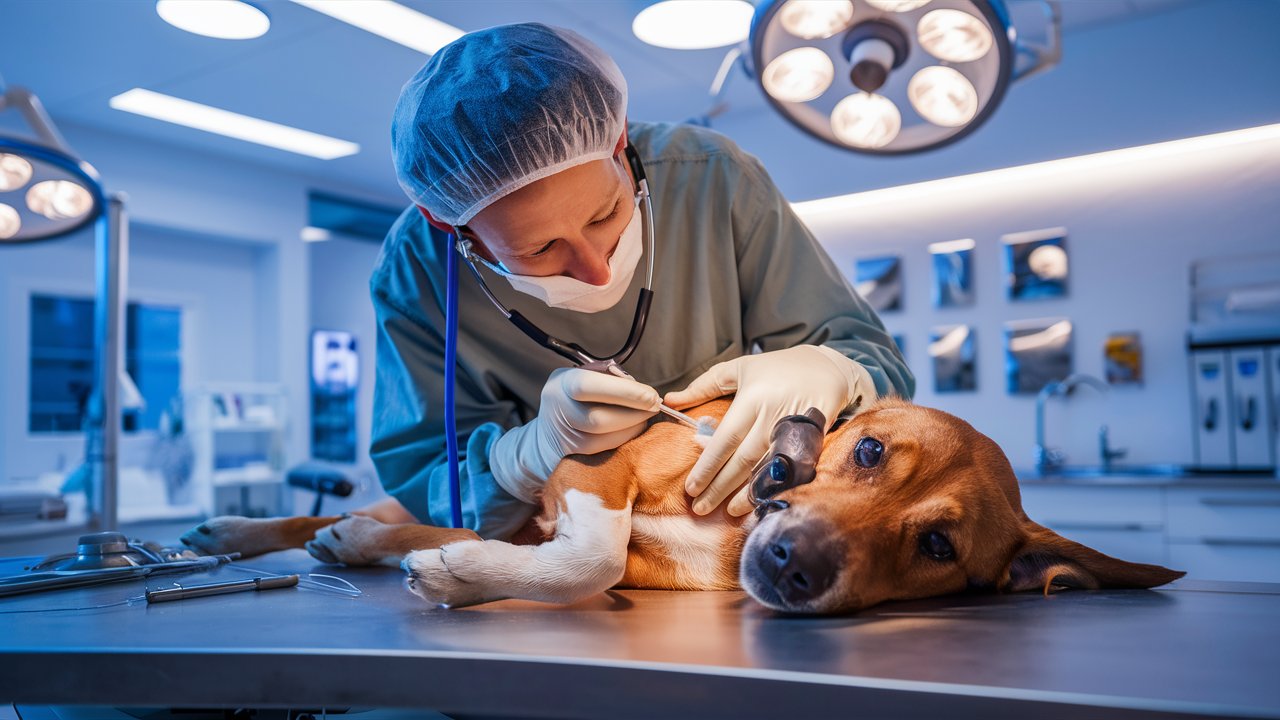
What is Anesthesia?
Anesthesia is a medical procedure used to block pain and induce unconsciousness during surgeries and other medical procedures. It involves the administration of drugs that can cause temporary loss of sensation, relaxation of muscles, and loss of consciousness. There are different types of anesthesia, each serving a specific purpose:
- General Anesthesia: This type of anesthesia induces a state of unconsciousness and complete loss of sensation. It is commonly used for major surgeries.
- Local Anesthesia: Local anesthesia numbs a specific area of the body, allowing procedures to be performed without pain while the dog remains conscious.
- Regional Anesthesia: This type of anesthesia blocks pain in a larger area of the body, such as an entire limb. It is often used in conjunction with general anesthesia.
- Sedation: Sedation involves administering drugs to calm a dog and reduce anxiety. It is often used for minor procedures or diagnostic tests.
Why Anesthesia for Dogs is Necessary?
Anesthesia for Dogs is necessary for various reasons in veterinary medicine:
- Surgical Procedures: From spaying and neutering to complex orthopedic surgeries, anesthesia for Dogs allows veterinarians to perform these procedures safely and effectively.
- Diagnostic Tests: Some diagnostic tests, such as X-rays and MRIs, require the dog to remain still, which can be achieved through sedation or anesthesia for Dogs.
- Dental Procedures: Dental cleanings and extractions often require anesthesia for Dogs to ensure the dog remains pain-free and cooperative.
- Emergency Situations: In emergency situations, anesthesia may be necessary to stabilize a dog and perform life-saving procedures.
Preparing for Anesthesia for Dogs
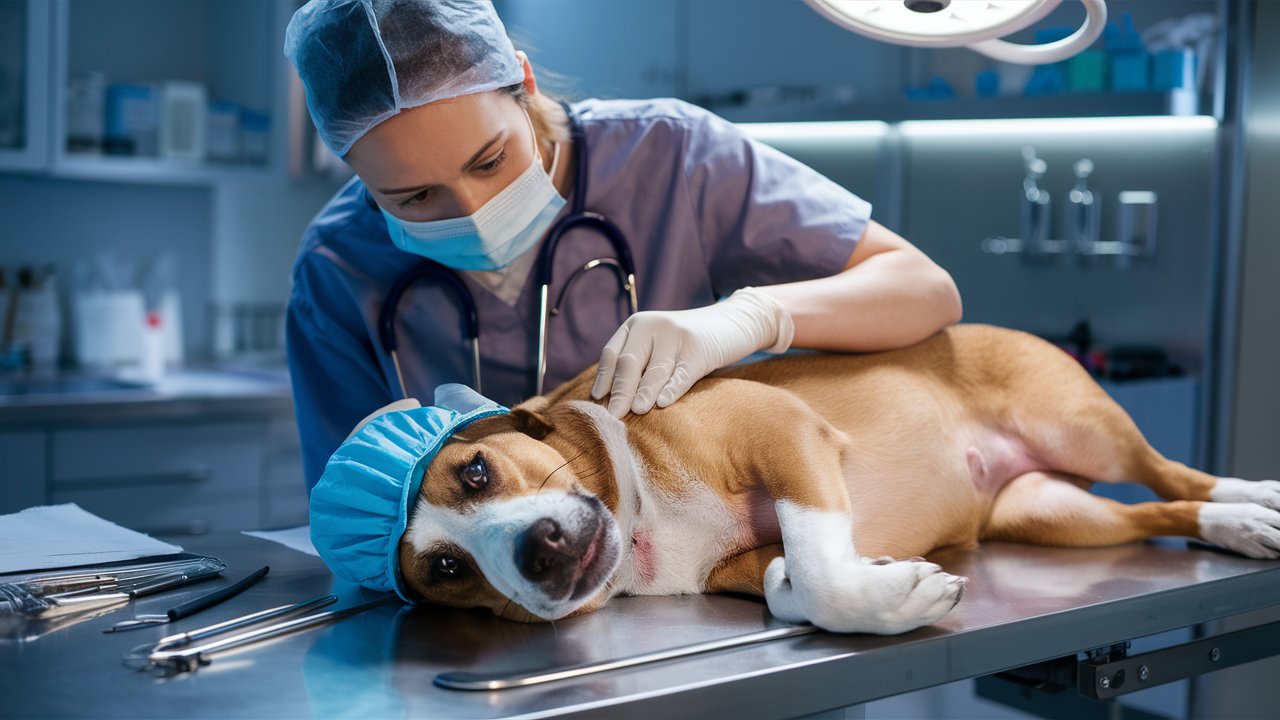
Pre-Anesthetic Evaluation
Before administering anesthesia for Dogs, veterinarians conduct a thorough pre-anesthetic evaluation to ensure the dog’s safety. This evaluation typically includes:
- Physical Examination: A comprehensive physical examination helps identify any underlying health issues that could affect anesthesia for Dogs.
- Blood Tests: Blood tests assess the dog’s overall health, including liver and kidney function, which are critical for metabolizing anesthetic drugs.
- Electrocardiogram (ECG): An ECG evaluates the dog’s heart function to detect any abnormalities that could pose a risk during anesthesia for Dogs.
- Imaging: In some cases, imaging tests like X-rays or ultrasounds are performed to gather additional information about the dog’s health.
Fasting Before Anesthesia
Fasting is an essential step before anesthesia for Dogs to reduce the risk of aspiration (inhaling stomach contents into the lungs) during the procedure. Typically, dogs are instructed to fast for 8-12 hours before anesthesia. However, water may be allowed up to a few hours before the procedure.
Owner Communication and Consent
Veterinarians ensure clear communication with pet owners regarding the anesthesia process. This includes discussing the reasons for anesthesia, potential risks, and the expected outcomes. Owners are also required to provide informed consent before the procedure.
The Anesthesia Process
Induction
The anesthesia for dogs process begins with induction, where the dog is transitioned from a conscious to an unconscious state. This is typically achieved using injectable anesthetic agents. The dog is closely monitored during this stage to ensure a smooth and safe transition.
Maintenance
Once the dog is under anesthesia, maintenance involves keeping the dog in a stable, unconscious state for the duration of the procedure. This is usually achieved using inhalant anesthetics administered through a breathing tube. The dog’s vital signs, including heart rate, blood pressure, and oxygen levels, are continuously monitored.
Monitoring
Monitoring is a critical aspect of anesthesia to ensure the dog’s safety. Veterinary technicians and anesthesiologists closely monitor the dog’s vital signs and adjust the anesthetic levels as needed. Advanced monitoring equipment, such as pulse oximeters and capnographs, provide real-time data on the dog’s condition.
Recovery
Recovery is the final stage of the anesthesia process. The dog is gradually weaned off the anesthetic agents, and the effects wear off. During this stage, the dog is closely monitored to ensure a smooth recovery. Pain management and supportive care are provided as needed.
Personal Anecdote: Max’s Surgery Experience
Max’s Initial Diagnosis
Max, a 7-year-old Golden Retriever, had been a lively and energetic dog for most of his life. However, Sarah, his owner, noticed that Max had been limping and showing signs of discomfort in his hind leg. Concerned about his well-being, she scheduled an appointment with their trusted veterinarian.
During the visit, the veterinarian conducted a thorough physical examination of Max. They observed that Max exhibited pain when his hind leg was manipulated. To get a clearer picture, the veterinarian recommended diagnostic imaging, including X-rays. The results revealed that Max had a torn cruciate ligament, a common injury in active dogs that often requires surgical intervention.
Pre-Surgery Preparations
Sarah was understandably anxious about the upcoming surgery and the use of anesthesia. The veterinarian took the time to explain the entire process in detail, addressing Sarah’s concerns and ensuring she felt informed and prepared. They discussed the pre-anesthetic evaluation, the surgical procedure, and the recovery process.
To ensure Max was a suitable candidate for anesthesia, the veterinarian performed a comprehensive pre-anesthetic evaluation. This included blood tests to assess Max’s overall health, focusing on his liver and kidney function, which are critical for metabolizing anesthetic drugs. Additionally, an electrocardiogram (ECG) was conducted to evaluate Max’s heart function and detect any potential abnormalities.
The Night Before Surgery
The night before the surgery, Sarah was instructed to withhold food from Max to reduce the risk of aspiration during anesthesia. However, she was allowed to provide water until a few hours before the procedure. Sarah made sure Max was comfortable and reassured him with gentle words and affection.
Surgery Day
On the day of the surgery, Sarah brought Max to the veterinary clinic early in the morning. The veterinary team greeted them warmly and made Max feel at ease. Before the procedure began, the veterinarian administered a sedative to help calm Max and reduce his anxiety.
Max was then moved to the surgical suite, where the anesthesia process began. The induction phase involved administering injectable anesthetic agents to transition Max from a conscious to an unconscious state. The veterinary team closely monitored Max’s vital signs during this stage to ensure a smooth and safe transition.
The Surgery
Once Max was under general anesthesia, the surgery commenced. The veterinarian made a precise incision to access the torn cruciate ligament. The damaged ligament was carefully repaired using advanced surgical techniques. Throughout the procedure, Max’s vital signs, including heart rate, blood pressure, and oxygen levels, were continuously monitored to ensure his stability.
The surgery lasted about two hours, and the veterinarian successfully repaired the ligament. After the procedure, Max was moved to the recovery area, where he was closely monitored as he began to wake up from the anesthesia.
Post-Surgery Recovery
As Max started to regain consciousness, the veterinary team ensured he was comfortable and pain-free. Pain management was a crucial aspect of Max’s post-surgery care. The veterinarian administered pain relief medications to keep Max comfortable during the initial recovery period.
Sarah was called to inform her that Max’s surgery was successful and that he was in the recovery phase. She was relieved and grateful for the excellent care Max received. The veterinarian provided Sarah with detailed post-operative care instructions, including medication schedules, activity restrictions, and guidelines for managing Max’s pain.
Bringing Max Home
Later that day, Sarah was able to bring Max home. She had prepared a quiet and comfortable space for Max to rest and recover. Following the veterinarian’s instructions, Sarah administered Max’s medications on schedule and ensured he remained calm and relaxed.
Max’s recovery required careful management to prevent any strain on the repaired ligament. Sarah restricted Max’s activity, keeping him on a leash during bathroom breaks and limiting his movement around the house. She also used a ramp to help Max navigate steps and avoid putting unnecessary pressure on his hind leg.
Gradual Return to Normal Activities
Over the next few weeks, Max’s recovery progressed smoothly. Regular follow-up visits with the veterinarian allowed them to monitor Max’s healing process and make any necessary adjustments to his care plan. As Max’s strength and mobility improved, Sarah gradually reintroduced short walks and gentle exercises to help him regain his muscle tone.
Throughout Max’s recovery, Sarah remained vigilant and attentive to his needs. She noticed that Max’s spirits were high, and he seemed more comfortable and pain-free as time went on. The bond between Sarah and Max grew even stronger during this period, as she provided the care and support he needed to recover fully.
A Happy Outcome
Several months after the surgery, Max had made a full recovery. He was back to his playful and energetic self, running and playing with the same enthusiasm as before the injury. Sarah was overjoyed to see Max thriving and enjoying his favorite activities again.
Reflecting on the experience, Sarah realized how important it was to be well-informed and prepared for the anesthesia and surgery process. The thorough pre-anesthetic evaluation, careful monitoring during surgery, and diligent post-operative care played crucial roles in Max’s successful recovery.
Anesthesia Risks and Complications

While anesthesia for dogs veterinary medicine has become increasingly safe due to advancements in drugs and monitoring technology, it is not without risks. Understanding these risks and how veterinarians mitigate them can help pet owners make informed decisions and feel more at ease when their dogs undergo procedures requiring anesthesia.
Common Risks of Anesthesia
- Adverse Reactions to Anesthetic Drugs
- Allergic Reactions: Some dogs may have allergic reactions to anesthetic agents, which can range from mild (swelling, itching) to severe (anaphylaxis). Veterinarians are prepared to address these reactions promptly if they occur.
- Sensitivity: Individual dogs may have varying sensitivities to anesthetic drugs, leading to unexpected responses. Pre-anesthetic evaluations help identify potential sensitivities.
- Cardiovascular Issues
- Hypotension (Low Blood Pressure): Anesthesia can cause a drop in blood pressure. If not managed properly, this can lead to reduced blood flow to vital organs.
- Arrhythmias: Abnormal heart rhythms can occur during anesthesia. Continuous monitoring allows for early detection and intervention.
- Cardiac Arrest: Though rare, cardiac arrest can occur under anesthesia. Immediate emergency protocols are in place to address such events.
- Respiratory Problems
- Hypoventilation: Anesthetic drugs can depress the respiratory system, leading to inadequate ventilation. Monitoring equipment helps ensure that the dog receives sufficient oxygen.
- Aspiration: If the dog vomits during anesthesia, there is a risk of inhaling stomach contents into the lungs. Fasting before anesthesia reduces this risk.
- Post-Anesthetic Nausea and Vomiting
- Some dogs may experience nausea and vomiting after anesthesia. This is usually temporary and can be managed with anti-nausea medications if necessary.
- Hypothermia (Low Body Temperature)
- Anesthesia can affect the body’s ability to regulate temperature, leading to hypothermia. Warm blankets and warming devices are used to maintain the dog’s body temperature.
Factors Influencing Anesthesia Risks
- Age
- Puppies and Senior Dogs: Very young and old dogs are more susceptible to anesthesia-related complications due to their developing or aging organs. Special care is taken when anesthetizing these age groups.
- Breed
- Brachycephalic Breeds: Breeds with short noses (e.g., Bulldogs, Pugs) are more prone to respiratory issues under anesthesia. Special protocols are followed to manage their unique needs.
- Sighthounds: Breeds like Greyhounds and Whippets have different metabolism rates for certain drugs, requiring careful selection and dosing of anesthetic agents.
- Health Status
- Pre-existing Conditions: Dogs with heart disease, liver or kidney dysfunction, and endocrine disorders like diabetes or hypothyroidism require tailored anesthetic for Dogs plans. Pre-anesthetic evaluations help identify and address these conditions.
- Obesity
- Obesity can complicate anesthesia by affecting drug distribution and increasing the risk of respiratory issues. Weight management and careful monitoring are essential for obese dogs undergoing anesthesia.
Minimizing Anesthesia for Dogs Risks
Veterinarians employ several strategies to minimize the risks associated with anesthesia for Dogs:
- Thorough Pre-Anesthetic Evaluation
- Conducting comprehensive physical exams, blood tests, and diagnostic imaging to assess the dog’s overall health and identify any potential risks.
- Customized Anesthetic Protocols
- Tailoring anesthetic plans to each dog’s individual needs, taking into account their age, breed, health status, and any pre-existing conditions.
- Advanced Monitoring
- Using state-of-the-art monitoring equipment to continuously track the dog’s vital signs, including heart rate, blood pressure, respiratory rate, and oxygen levels, throughout the anesthesia process.
- Experienced Anesthesia Team
- Having skilled veterinary technicians and anesthesiologists who are trained to manage anesthesia and respond promptly to any complications that may arise.
- Pain Management
- Implementing effective pain management strategies before, during, and after the procedure to ensure the dog’s comfort and minimize stress.
Case Study: Max’s Surgery Experience and Anesthesia for Dogs Management
Max, the 7-year-old Golden Retriever, provides a real-world example of how anesthesia for Dogs risks are managed in a veterinary setting. Here’s how the veterinary team ensured Max’s safety throughout his surgery for a torn cruciate ligament:
- Pre-Anesthetic Evaluation
- Max underwent a thorough pre-anesthetic evaluation, including blood tests to check liver and kidney function, and an ECG to assess heart health. These tests confirmed that Max was a good candidate for anesthesia.
- Customized Anesthetic Plan
- Given Max’s age and overall health, the veterinarian developed a customized anesthetic protocol. They chose drugs that were safe for Max’s condition and minimized potential side effects.
- Monitoring and Support
- During the induction phase, Max’s vital signs were closely monitored as he transitioned from consciousness to unconsciousness. Throughout the surgery, continuous monitoring ensured that any changes in his vital signs were detected and addressed immediately.
- The surgical team was prepared to manage any potential complications, such as hypotension or respiratory depression, using appropriate interventions.
- Post-Anesthetic Care
- After the surgery, Max was moved to a recovery area where he was monitored as he regained consciousness. Pain management was a priority, and Max received medications to keep him comfortable.
- Sarah, Max’s owner, was given detailed instructions on how to care for Max at home, including signs of potential complications to watch for and steps to ensure a smooth recovery.
Personal Anecdote about anesthesia for Dogs: Bella’s Dental Cleaning
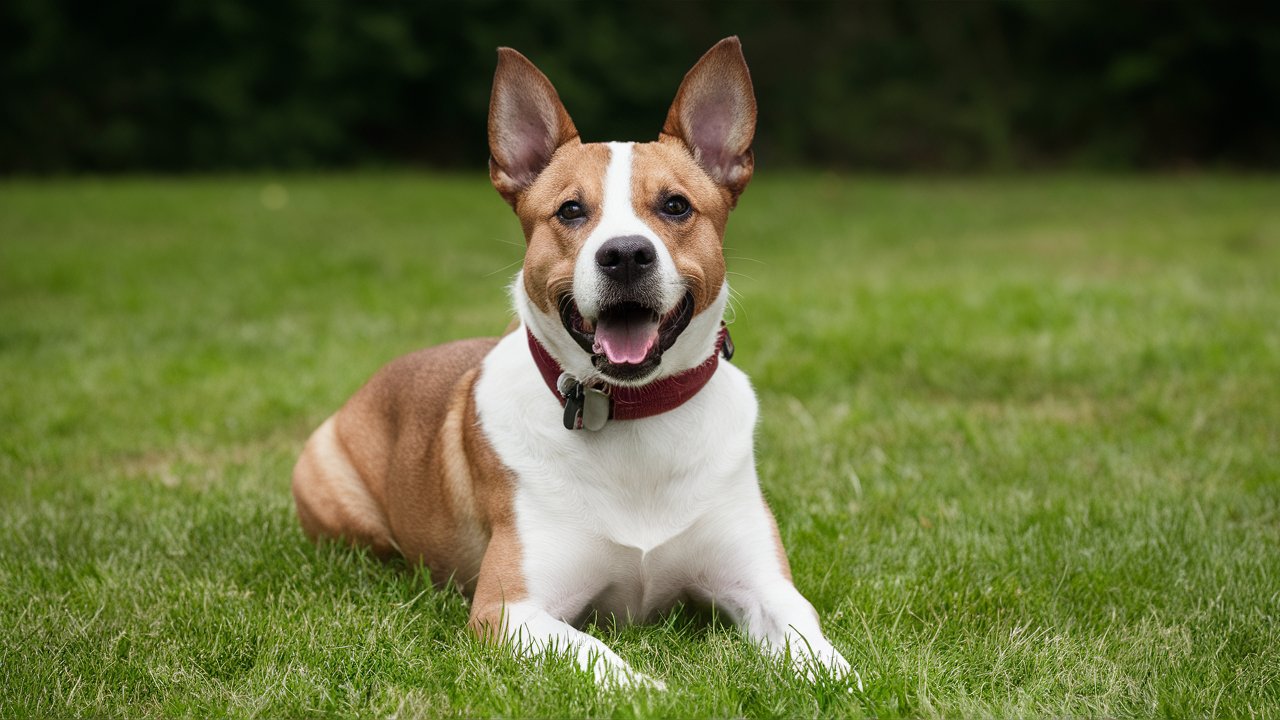
To illustrate the importance of anesthesia in routine procedures, let’s share the story of Bella, a 5-year-old Shih Tzu who needed a dental cleaning.
Bella’s Dental Health
Bella had developed tartar buildup and gum inflammation, which required professional dental cleaning. Her owner, John, was concerned about the need for anesthesia. The veterinarian explained that anesthesia was necessary to perform a thorough cleaning and ensure Bella’s comfort.
Bella’s Anesthetic Procedure
On the day of the dental cleaning, Bella was given a sedative to calm her before the procedure. The veterinary team monitored her closely as she was placed under general anesthesia. The dental cleaning was performed with precision, removing tartar and addressing any dental issues.
Bella’s Recovery
Bella’s recovery was smooth, thanks to careful monitoring and post-procedure care. John was given instructions on how to maintain Bella’s dental health at home. Bella’s breath was noticeably fresher, and her overall health improved.
Post-Anesthesia Care
Immediate Post-Anesthesia for Dogs Period
The immediate post-anesthesia for Dogs period is crucial for ensuring a smooth recovery. During this time, the dog is closely monitored for any signs of complications. Key aspects of post-anesthesia care include:
- Monitoring Vital Signs: Vital signs, such as heart rate, respiratory rate, and temperature, are monitored to ensure stability.
- Pain Management: Pain relief is provided to ensure the dog is comfortable during recovery.
- Observation for Complications: Any signs of complications, such as excessive bleeding or respiratory distress, are addressed promptly.
Home Care After Anesthesia for Dogs
Once the dog is discharged, owners play a vital role in ensuring a smooth recovery at home. Here are some tips for post-anesthesia for Dogs home care:
- Follow Veterinary Instructions: Carefully follow any instructions provided by the veterinarian, including medication schedules and activity restrictions.
- Create a Comfortable Environment: Provide a quiet and comfortable space for the dog to rest and recover.
- Monitor for Unusual Behavior: Keep an eye out for any unusual behavior, such as excessive lethargy, vomiting, or difficulty breathing, and contact the veterinarian if any concerns arise.
- Gradual Return to Normal Activity: Gradually reintroduce normal activities, such as walks and playtime, as the dog recovers.
Personal Anecdote: Rocky’s Tumor Removal

To highlight the importance of post-anesthesia for Dogs care, let’s share the story of Rocky, an 8-year-old Labrador Retriever who underwent tumor removal surgery.
Rocky’s Diagnosis
Rocky was diagnosed with a benign tumor on his leg that required surgical removal. His owner, Lisa, was anxious about the surgery and anesthesia. The veterinarian explained the procedure and provided detailed instructions for post-anesthesia care.
Rocky’s Surgery and Recovery
Rocky’s surgery went smoothly, and he was closely monitored during anesthesia and recovery. Lisa followed the veterinarian’s instructions, ensuring Rocky had a comfortable recovery space and administering his pain medication as prescribed.
Rocky’s Return to Health
Rocky’s recovery was successful, and the tumor was completely removed. Lisa was diligent in monitoring his progress and gradually reintroducing his regular activities. Rocky’s health improved, and he was back to his energetic self in no time.
Conclusion
Anesthesia for Dogs is an essential component of veterinary medicine, allowing veterinarians to perform surgeries and procedures safely and effectively. Understanding the anesthesia process, from pre-anesthetic evaluation to post-anesthesia for Dogs care, can help pet owners feel more confident and informed.
Through personal anecdotes and stories, we’ve seen how anesthesia for Dogs can be a safe and effective tool for various medical procedures, from routine dental cleanings to complex surgeries. With proper preparation, monitoring, and care, anesthesia can greatly enhance the quality of life for our beloved canine companions.
Remember, if you have any concerns or questions about anesthesia for dog, don’t hesitate to discuss them with your veterinarian. They are there to provide guidance and ensure the best possible care for your furry friend.

